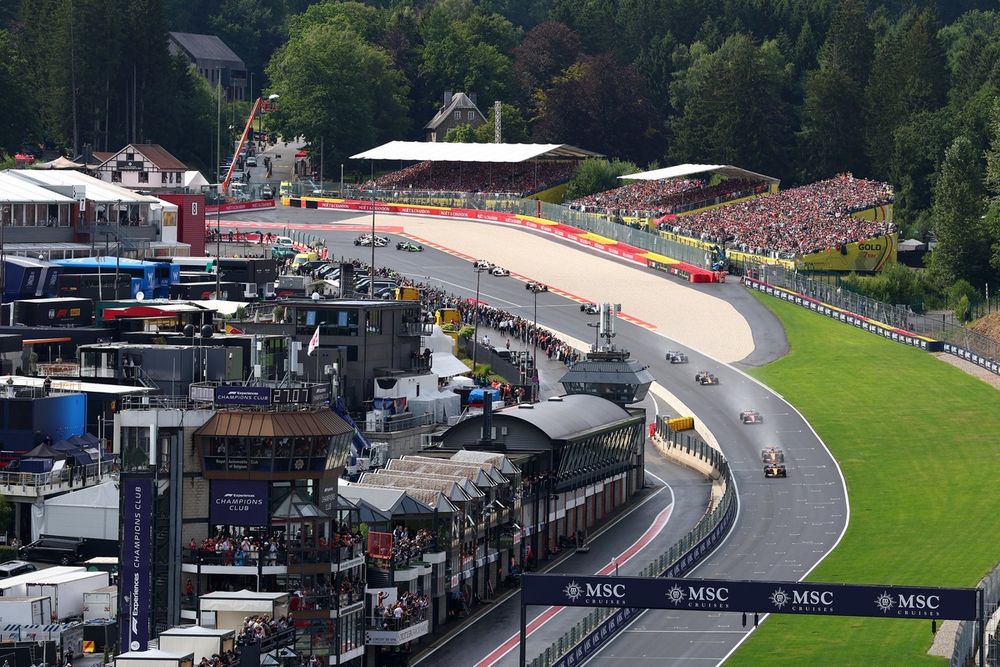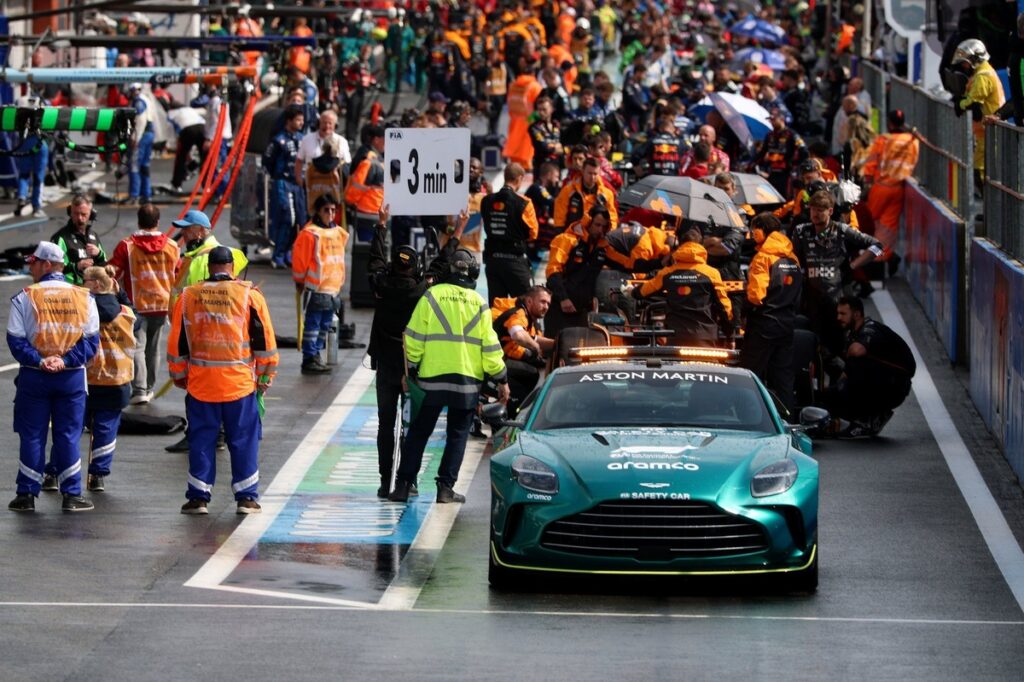Heavy rain in the morning triggered flashbacks of 2021 for many in the Spa-Francorchamps paddock. Back then, unrelenting rain in the Ardennes resulted in a “race” of just two laps behind the safety car. Four years on, a repeat of that scenario was avoided – but the race was far from a thriller, despite promising ingredients like a legendary circuit, an interesting starting grid, and wet conditions. The late start removed much of the excitement, turning a potential modern wet-weather classic into a mostly dry race.
After the race, opinions in the paddock were divided. Carlos Sainz had “respect” for race control, adding that at a track like Spa, especially considering its recent history, “better safe than sorry” should be the rule. Ferrari team boss Frederic Vasseur added it’s easy to judge in hindsight, noting that teams would’ve been the first to slam race control if an earlier start had gone wrong.
On the other hand, Red Bull expressed surprise at the lengthy delay. Helmut Marko admitted Red Bull had chosen the wrong set-up for the actual conditions but suggested that “with the right race director,” the set-up would have been the right one. Max Verstappen wasn’t impressed by the race director’s calls either: “If you can’t see properly, you can always lift.”
Poor visibility, though Verstappen wanted to race immediately
In reality, the delay was the result of multiple factors and step-by-step decisions, Autosport has learned after the race. The FIA initially intended for the race to start on schedule at 3pm local time, with a formation lap behind the safety car as the standard protocol in such conditions. During this lap, race control listened to driver feedback.
According to the FIA, almost all drivers said visibility was still too poor to race at that point. Only one driver was willing to go racing immediately: Verstappen. The Dutchman voiced his opinion over the radio that a couple of laps behind the safety car would have been enough to clear most of the standing water on track. Alex Albon shared a similar view behind the wheel and said it would be good to get some laps in before more rain would hit the track.
But based on the feedback of the majority of the drivers, a red flag was shown. At first, the FIA considered restarting the race after a short 10-minute pause. However, the rules require the race director to issue a “10 minutes warning” to teams ahead of a restart. The FIA then noticed more rain was expected around that time, effectively ruling out a quick restart.
Lando Norris, McLaren, Oscar Piastri, McLaren
Photo by: Michael Potts / Motorsport Images
Why didn’t the three-hour race clock start running?
This also raised another question: had the three-hour race clock started yet? Even the teams weren’t aligned. McLaren told Lando Norris in pitlane that it hadn’t, since the race hadn’t officially begun. Haas team boss Ayao Komatsu, however, interpreted it differently. The confusion is understandable. Article 5.4d of the sporting regulations states: “If the formation lap for the race is started behind the safety car, the maximum total race time of three hours will commence at the time the green lights on the start gantry are illuminated to signal the safety car will leave the grid in accordance with Article 49.2.”
This is exactly what happened at 3pm local time. However, the FIA clarified that this section of the regulations only applies in the case of an actual race interruption, not during the starting procedure. This meant the race had not officially started, and parc ferme conditions were still in effect. Teams were not allowed to change their set-ups in anticipation of drier conditions.
It seemingly hurt teams with a higher-downforce set-up, including Red Bull, but team boss Laurent Mekies later clarified that they wouldn’t have changed the set-up anyway, even if it had been allowed by the FIA. “When the formation lap was then suspended, you still expect to have a fair bit of wet running at that moment. I don’t think we would have changed anything, even if parc ferme was open, because we were expecting to go back on track much earlier than what we eventually did.”
Once the race did start, multiple factors caused the extra safety car laps and a rolling start call
According to the FIA, the post-red flag rain lasted about 30 minutes. After that, officials waited a bit longer before sending the medical car out on track at 4pm local time to gather feedback on the track conditions. Alan van der Merwe reported back to race control that several sections still had significant standing water and recommended that marshals be given another 10 minutes to clear the surface. This brought the timeline to 4:10pm for the “10 minutes warning,” and cars leaving pitlane at 4:20pm. Notably, the FIA initially announced “race will be resumed,” which was later corrected, as the race had never officially started.
Once the drivers were back on track, the initial plan was to complete just two laps behind the safety car. More drivers – including Lewis Hamilton – felt it was safe to go racing at this stage. However, race control still deemed the spray on Kemmel Straight, particularly the section after Raidillon, too risky. It’s a treacherous part of the iconic track, where visibility is a concern even in dry conditions during incidents. Therefore, an additional safety car lap was added.
A fourth lap followed, but this time for a different reason: whether the race would begin with a standing or rolling start. Fans naturally hoped for a standing start, and weather conditions may have been good enough for it, but the FIA had to consider another factor as well: the starting grid itself – specifically, the amount of standing water and the imbalance between the drier and wetter sides. The drier side had significantly better grip, while the other side still had puddles, creating an unfair advantage and a potential safety concern for half the field.

Charles Leclerc, Ferrari, Lando Norris, McLaren, Oscar Piastri, McLaren
Photo by: Andy Hone / LAT Images via Getty Images
Spa once again exposed F1’s issues in the wet
The results were a delay of over 90 minutes before the green flag was shown, and Verstappen commenting: “This is not really wet weather racing for me. I just find it a bit of a shame for everyone. You will never see these classic wet races anymore.”
Above all, the afternoon has once again highlighted F1’s current struggles in the wet. Most drivers still don’t like Pirelli’s full wets – with more changes expected for 2026 – but spray remains the biggest issue. Combine that with Spa’s reputation, and you get the cautious approach seen on Sunday.
Some teams in the paddock view it as overly conservative, but from the FIA’s point of view, safety took absolute precedence. Striking the right balance between safety and spectacle remains a difficult task.
In this article
Be the first to know and subscribe for real-time news email updates on these topics
Read the full article here

